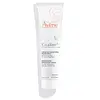What's inside
What's inside
 Key Ingredients
Key Ingredients

 Benefits
Benefits

 Concerns
Concerns

 Ingredients Side-by-side
Ingredients Side-by-side

Water
Skin ConditioningDicaprylyl Carbonate
EmollientCocoglycerides
EmollientPropylene Glycol
HumectantGlycerin
HumectantSimmondsia Chinensis Seed Oil
EmollientOxidized Corn Oil
Skin ConditioningSucrose Stearate
EmollientSucrose Tetrastearate Triacetate
EmollientPropanediol
SolventHelichrysum Italicum Flower Oil
MaskingMentha Arvensis Leaf Oil
MaskingAllantoin
Skin ConditioningArnica Montana Flower Extract
MaskingTocopherol
AntioxidantN-Hydroxysuccinimide
Skin ConditioningChrysin
Skin ConditioningPalmitoyl Tripeptide-1
Skin ConditioningPalmitoyl Tetrapeptide-7
Skin ConditioningStearyl Alcohol
EmollientC20-22 Alkyl Phosphate
EmulsifyingGlyceryl Behenate
EmollientC20-22 Alcohols
Emulsion StabilisingPhenoxyethanol
PreservativeXanthan Gum
EmulsifyingChlorphenesin
AntimicrobialPotassium Sorbate
PreservativeSteareth-20
CleansingSodium Hydroxide
BufferingLinalool
PerfumingLimonene
PerfumingChlorhexidine Digluconate
AntimicrobialSodium Citrate
BufferingCitric Acid
BufferingWater, Dicaprylyl Carbonate, Cocoglycerides, Propylene Glycol, Glycerin, Simmondsia Chinensis Seed Oil, Oxidized Corn Oil, Sucrose Stearate, Sucrose Tetrastearate Triacetate, Propanediol, Helichrysum Italicum Flower Oil, Mentha Arvensis Leaf Oil, Allantoin, Arnica Montana Flower Extract, Tocopherol, N-Hydroxysuccinimide, Chrysin, Palmitoyl Tripeptide-1, Palmitoyl Tetrapeptide-7, Stearyl Alcohol, C20-22 Alkyl Phosphate, Glyceryl Behenate, C20-22 Alcohols, Phenoxyethanol, Xanthan Gum, Chlorphenesin, Potassium Sorbate, Steareth-20, Sodium Hydroxide, Linalool, Limonene, Chlorhexidine Digluconate, Sodium Citrate, Citric Acid
Water
Skin ConditioningCaprylic/Capric Triglyceride
MaskingParaffinum Liquidum
EmollientGlycerin
HumectantHydrogenated Vegetable Oil
EmollientZinc Oxide
Cosmetic ColorantPropylene Glycol
HumectantPolyglyceryl-2 Sesquiisostearate
EmulsifyingPEG-22/Dodecyl Glycol Copolymer
EmulsifyingAluminum Stearate
Cosmetic ColorantAquaphilus Dolomiae Ferment Filtrate
Skin ConditioningArginine
MaskingBeeswax
Emulsion StabilisingCopper Sulfate
Skin ConditioningMagnesium Stearate
Cosmetic ColorantMicrocrystalline Wax
Emulsion StabilisingTromethamine
BufferingZinc Sulfate
AntimicrobialWater, Caprylic/Capric Triglyceride, Paraffinum Liquidum, Glycerin, Hydrogenated Vegetable Oil, Zinc Oxide, Propylene Glycol, Polyglyceryl-2 Sesquiisostearate, PEG-22/Dodecyl Glycol Copolymer, Aluminum Stearate, Aquaphilus Dolomiae Ferment Filtrate, Arginine, Beeswax, Copper Sulfate, Magnesium Stearate, Microcrystalline Wax, Tromethamine, Zinc Sulfate
 Reviews
Reviews

Alternatives
Ingredients Explained
These ingredients are found in both products.
Ingredients higher up in an ingredient list are typically present in a larger amount.
Glycerin is already naturally found in your skin. It helps moisturize and protect your skin.
A study from 2016 found glycerin to be more effective as a humectant than AHAs and hyaluronic acid.
As a humectant, it helps the skin stay hydrated by pulling moisture to your skin. The low molecular weight of glycerin allows it to pull moisture into the deeper layers of your skin.
Hydrated skin improves your skin barrier; Your skin barrier helps protect against irritants and bacteria.
Glycerin has also been found to have antimicrobial and antiviral properties. Due to these properties, glycerin is often used in wound and burn treatments.
In cosmetics, glycerin is usually derived from plants such as soybean or palm. However, it can also be sourced from animals, such as tallow or animal fat.
This ingredient is organic, colorless, odorless, and non-toxic.
Glycerin is the name for this ingredient in American English. British English uses Glycerol/Glycerine.
Learn more about GlycerinPropylene Glycol is an odorless, colorless liquid. As a humectant, it helps skin retain moisture. It also aids in delivering active ingredients.
Another role of this ingredient is preventing a product from melting or freezing. Propylene glycol also adds antimicrobrial properties to a product, elongating product lifespan.
This ingredient is considered an organic alcohol and commonly added into both cosmetics and foods.
Those with sensitive skin or conditions may develop a rash when using this ingredient.
Learn more about Propylene GlycolWater. It's the most common cosmetic ingredient of all. You'll usually see it at the top of ingredient lists, meaning that it makes up the largest part of the product.
So why is it so popular? Water most often acts as a solvent - this means that it helps dissolve other ingredients into the formulation.
You'll also recognize water as that liquid we all need to stay alive. If you see this, drink a glass of water. Stay hydrated!
Learn more about Water